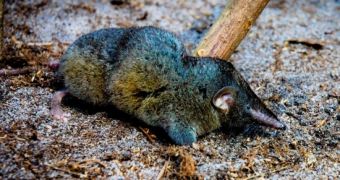Wolverine's adamantium skeleton might be fairly sturdy, but a newly discovered species of shrew has high chances to put this fictional character to shame.
Scientists writing in today's issue of the journal Biology Letters describe a shrew species, found in the Republic of Congo, whose spine is believed to be strong enough to support the weight of a grown man.
Not that anyone would ever consider jumping on such animal's back to test this theory, researchers wish to clarify.
Specialists who have had the chance to examine the representative of this species up close explain that the shrew's backbone owes its strength to its rather peculiar anatomy.
The vertebrae that form it interlock much like the teeth of two combs would.
Additionally, they are abnormally thick, especially when compared to those of other animals, and contain loads of calcium.
According to Nature, researchers estimate that, relative to its body size, this shrew species has the strongest spine thus far documented in the animal kingdom.
Hence the fact that it was named Thor's hero shrew, after the Norse god of strength. Rest assured, the species also got a more official name, i.e. Scutisorex thori, that it can use when applying for a job.
Thor's hero shrew is related to another impressive species that was discovered in equatorial Africa about a century ago.
This second species is known as the woolly hero shrew (Scutisorex somereni), and it too has an oddly resilient backbone whose structure resembles that of Thor's hero shrew's spine.
For the time being, specialists cannot say why these two animal species have evolved to have such sturdy spines.
Since nothing in the natural world happens without a very good reason, they suspect that the shrews do get some benefits from their highly resilient backbones.
“This significant investment of energy and calcium must have an evolutionary benefit,” researcher Rainer Hutterer of the Alexander Koenig Zoological Research Museum in Bonn, Germany says.
Hopefully, specialists will be able to figure out what these benefits are after spending some time observing the animals go about their business in the forest.

 14 DAY TRIAL //
14 DAY TRIAL //